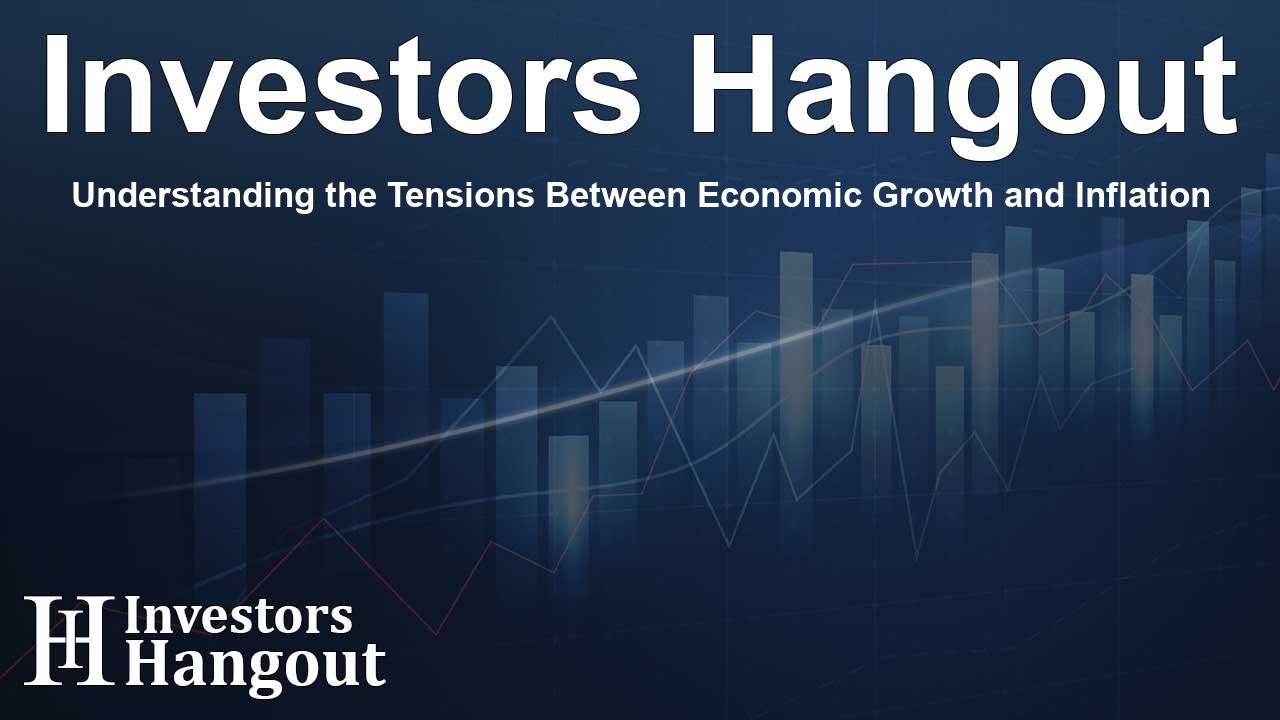Understanding the Tensions Between Economic Growth and Inflation

The Economic Landscape: Challenges Ahead
In recent times, economic growth challenges have become increasingly evident. While tariffs are predicted to elevate inflation, fears of stagflation appear to be overstated. It is anticipated that the Federal Reserve will postpone any potential rate cuts until later this year, even amidst escalating pressure from political leaders, with the likelihood of making larger moves when cuts do occur.
Consumer Sentiment: The Impact on Spending
The forecast for GDP growth for the upcoming years has notably decreased from a consensus of 2.2% to 1.5% at the beginning of the year. The consumer's role is central to this decline. Sentiment has taken a negative turn, leading to stagnation in consumer spending over the past several months. This spending had previously been a significant driver of growth following the pandemic period.
Factors Contributing to Consumer Caution
Three primary factors are influencing this cautious consumer behavior. First, households have quickly understood that they bear most of the costs related to tariffs, despite assurances from leadership that these expenses would primarily fall on foreign entities. A recent tariff increase on major trading partners has intensified concerns, suggesting that higher prices may severely impact consumer purchasing power.
Trade Uncertainty and Corporate Concerns
The corporate sector is grappling with a lack of clarity surrounding trade policies. There is a widespread impression that the job market is weakening more than official statistics indicate. Job creation has stagnated significantly outside of sectors such as private education and healthcare, with noticeable declines over the last two and a half years. Furthermore, the increasing notifications of job adjustments signal potential layoffs and a rising unemployment rate in the latter half of the year.
Wealth Volatility's Role in Economic Stability
Moreover, fluctuations in household wealth are causing unrest. While equity markets have recovered from earlier losses, housing prices—typically the mainstay of American wealth—are becoming problematic. Rising inventory, coupled with a lack of affordability, signifies a struggle in the housing market, with continuous months of price drops.
Inflation and Economic Policy: A Delicate Balance
Inflation has remained relatively stable recently, showing minimal month-to-month increases. However, it is anticipated that the repercussions of tariffs will become evident in upcoming months. The upcoming CPI reports are closely watched, as they may reflect notable increases in inflation rates.
The Federal Reserve's Response and Anticipated Cuts
The Federal Reserve faces mounting pressure to respond to inflation pressures while balancing growth concerns. Recent criticisms followed the Fed's prior stance that inflationary pressures were temporary. With inflationary trends appearing more permanent, FOMC members may be hesitant to act without conclusive evidence of economic weakness. This tension is expected to escalate, primarily due to political pressures and potential future leadership changes within the Fed.
Forecasting Future Fed Actions
Despite the current economic environment influencing a cooler growth outlook, interest rate cuts are on the horizon. The combination of a softer job landscape and increased pressures of disinflation from housing costs will likely push the Fed towards easing rates sooner than previously predicted. The landscape set by recent legislative actions indicates growing challenges that could further necessitate rate cuts.
Conclusion: The Road Ahead
As we navigate this complex interplay between tariffs, inflation, and economic growth, the potential for increased political tensions is palpable. These intricate dynamics will take center stage in discussions regarding economic policy. Hence, remaining informed about these developments becomes crucial as they will significantly shape the economic narrative and decisions in the months to come.
Frequently Asked Questions
What are the biggest challenges to economic growth currently?
Consumer sentiment is low, affecting spending, while trade uncertainties and tariffs add to the unpredictability in the economic landscape.
How are tariffs influencing inflation rates?
Tariffs lead to increased costs for consumers, which can directly push up inflation rates as businesses adjust prices in response to higher import costs.
What indicators suggest a need for interest rate cuts?
The combination of stagnant job growth, lower consumer spending, and signals of tightening household wealth all point towards a potential for interest rate cuts.
Why is consumer spending so critical to economic recovery?
Consumer spending drives a significant portion of GDP growth, so when it stalls, it can hinder recovery and negatively impact overall economic activity.
What role does the Federal Reserve play in managing economic stability?
The Federal Reserve influences monetary policy through interest rate adjustments, affecting borrowing costs, inflation, and overall financial conditions in the economy.
About The Author
Contact Evelyn Baker privately here. Or send an email with ATTN: Evelyn Baker as the subject to contact@investorshangout.com.
About Investors Hangout
Investors Hangout is a leading online stock forum for financial discussion and learning, offering a wide range of free tools and resources. It draws in traders of all levels, who exchange market knowledge, investigate trading tactics, and keep an eye on industry developments in real time. Featuring financial articles, stock message boards, quotes, charts, company profiles, and live news updates. Through cooperative learning and a wealth of informational resources, it helps users from novices creating their first portfolios to experts honing their techniques. Join Investors Hangout today: https://investorshangout.com/
The content of this article is based on factual, publicly available information and does not represent legal, financial, or investment advice. Investors Hangout does not offer financial advice, and the author is not a licensed financial advisor. Consult a qualified advisor before making any financial or investment decisions based on this article. This article should not be considered advice to purchase, sell, or hold any securities or other investments. If any of the material provided here is inaccurate, please contact us for corrections.
